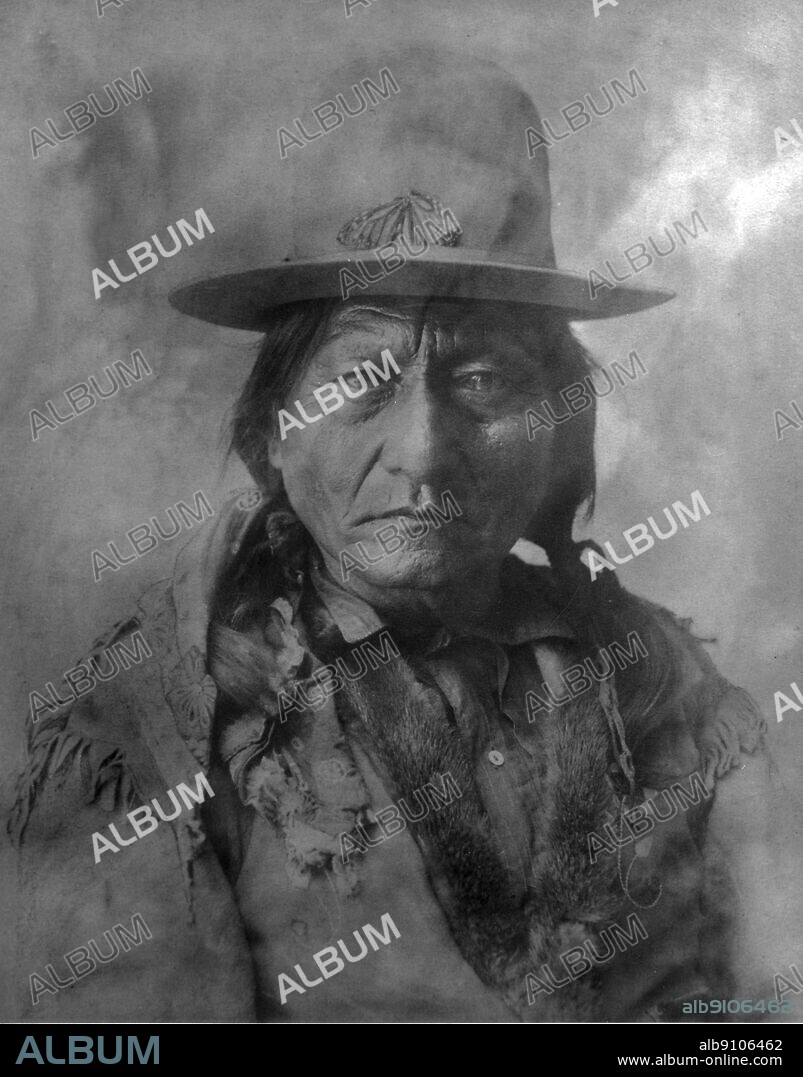alb9106462
Portrait of Sitting Bull. Sioux. Hunkpapa Sioux (1831-1890). Sitting Bull, Lakota Medicine Man and Chief was considered the last Sioux to surrender to the U.S. Government.. In the early 1850s, the Lakota (Sioux) had begun to feel the pressure of the white expansion into the Western United States. Sitting Bull did not participate in the resistance until 1863 when the settlers threatened the Hunkpapa hunting grounds. He had distinguished himself from an early age as a leader, killing his first buffalo at ten and "counting coup" (touching the enemy without their knowing) at fourteen. Because of his leadership during these times he was named principle chief of the Teton Sioux Nation in 1867.

|
Añadir a otro lightbox |
|
Añadir a otro lightbox |



¿Ya tienes cuenta? Iniciar sesión
¿No tienes cuenta? Regístrate
Compra esta imagen.
Selecciona el uso:

Descripción:
Ver traducción automática
Portrait of Sitting Bull. Sioux. Hunkpapa Sioux (1831-1890). Sitting Bull, Lakota Medicine Man and Chief was considered the last Sioux to surrender to the U.S. Government.. In the early 1850s, the Lakota (Sioux) had begun to feel the pressure of the white expansion into the Western United States. Sitting Bull did not participate in the resistance until 1863 when the settlers threatened the Hunkpapa hunting grounds. He had distinguished himself from an early age as a leader, killing his first buffalo at ten and "counting coup" (touching the enemy without their knowing) at fourteen. Because of his leadership during these times he was named principle chief of the Teton Sioux Nation in 1867.
Crédito:
Album / TopFoto
Autorizaciones:
Modelo: No - Propiedad: No
¿Preguntas relacionadas con los derechos?
¿Preguntas relacionadas con los derechos?
Tamaño imagen:
4491 x 5725 px | 73.6 MB
Tamaño impresión:
38.0 x 48.5 cm | 15.0 x 19.1 in (300 dpi)
 Pinterest
Pinterest Twitter
Twitter Facebook
Facebook Copiar enlace
Copiar enlace Email
Email
